

The above is an image map, use it to navigate the site. Best viewed at 1280 x 1024 using any browser.
When I was... 7? 8? - it would have been about 1971 - I had my very first
computer book: a "Ladybird" book called 'How It Works: The Computer".
This page from the book remained in my memory for years after... I still
have the book

"A small digital computer designed for the businessman"... Well,
I finally found the computer :-)
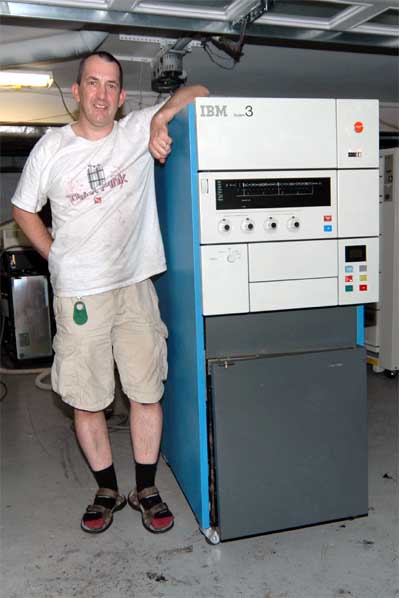

I've been collecting IBM equipment for some time, and I've been especially
successful in collecting examples of the IBM 'midrange' series of machines
- all products of the IBM Rochester plant, and quite distinct from the
more 'traditional' IBM DP line of mainframe equipment. The chart belows
tracks the evolution of the midrange line... and I had located working
examples of all thse machines, the System/32, /34, /36, /38, and various
AS/400s. The one that I'd had no luck finding was the machine that started
it all off - the very first complete machine made at Rochester, the System/3.
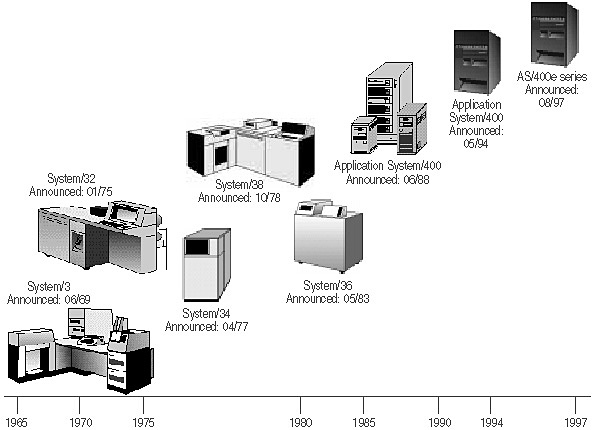
There is a certain data processing bureau in Ohio which, believe it or
not, still has a System/3 in occasional production! I've been in touch
with the owner, via a third-party, for a couple of years now. In October
2007 I finally got the news I had been waiting for - he had agreed to let
me have one of his spare machines (he had five or six machines in total!).
A deal involving a relatively small amount of money was done, and a truck
was arranged to pick the machine up. I'd agreed to buy a machine that had
one of the power supplies missing - the plan was to find a replacement,
or substitute a 'modern' PSU to get the machine running again. However,
on further examination the owner remembered that the machine with the missing
PSU also had a badly damaged front panel - legacy of a moving accident
- so he very decently decided to give me a complete, undamged machine instead.
On hearing this, I immediately made him an offer for the machine with the
busted front panel (for spares or restoration - I have a spare panel),
which he accepted. So I now have two System/3s... plus some other bits
of which more anon.
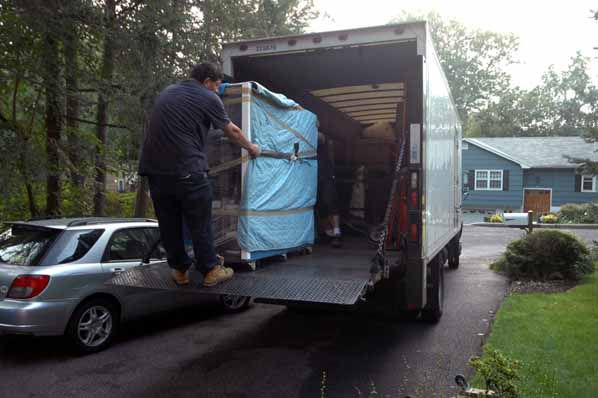
Coming off the truck...

...and into the Corestore Reception Facility (my garage). Yes, there are other things there too... 3350 disk drives to be precise - from a different system; it was convenient to put them on the same truck. The System/3 needs 3340 (or 5440, at a push) disks - if anyone has some, or has seen some, please get in touch! Let's take a tour of the machine:
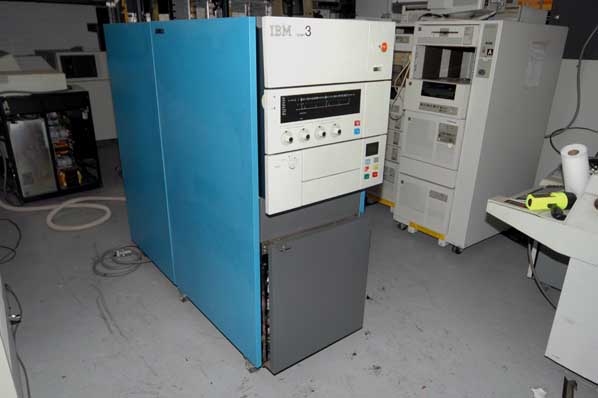
A fairly standard IBM box, very 360-ish in style. Front panel also quite
360ish - same knobs and buttons.
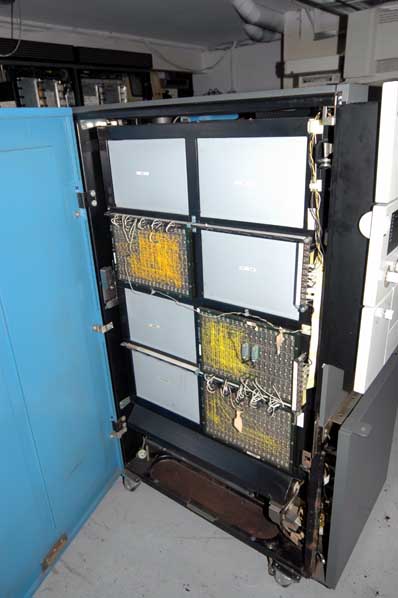
Starting with the left side... open the front door, and we see logic gates.
This is the A-gate; the B-gate is on the other side. System/3 had a LOT
of options; only a couple of the spaces for logic are in use on this side.
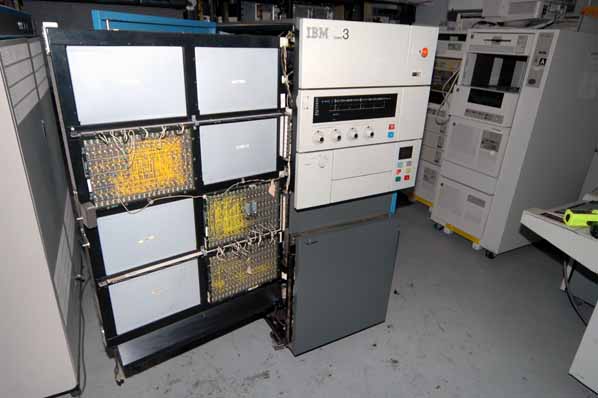
The A-gate swings fully open
.
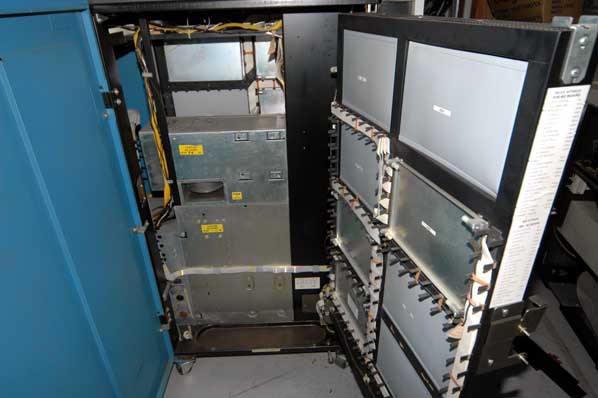
Behind the A-gate is the back of the power supply - I think this is what
IBM called a 'mid-pac' power supply.
The machine is in pretty clean condition - there's some slight superficial
corrosion on some of the chassis parts, but it's otherwise in good shape
- was working when turned-off and stored.
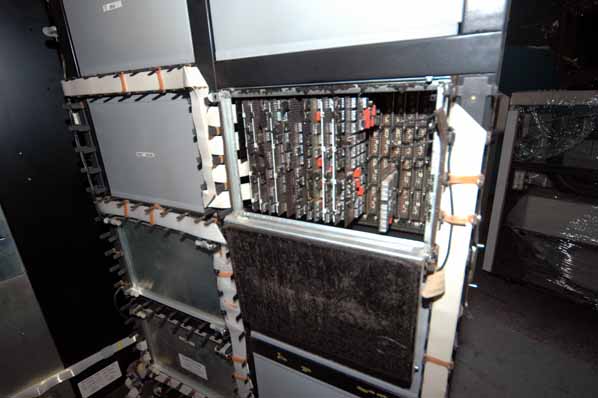
Inside one of the logic bays. The System/3 was constructed using a mixture
of technologies, but was primarily MST - IBM's first series of monolithic
integrated circuits, using CSEF logic.
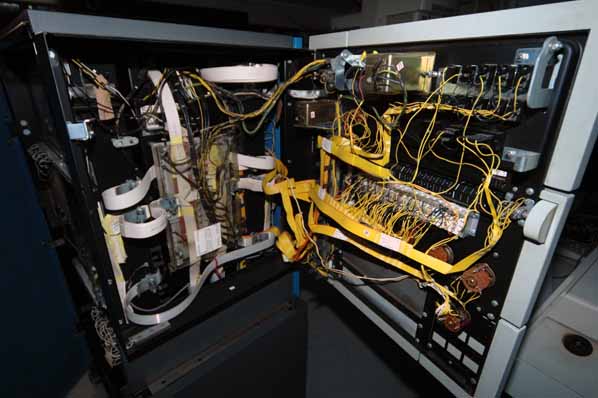
Behind the front panel.
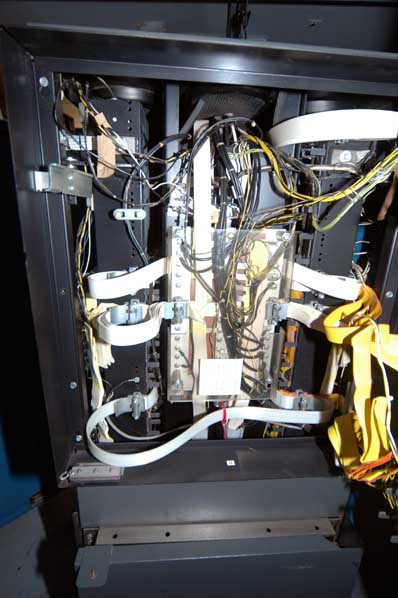
Closeup - in the centre is the end of the power supply stack, logic gates
to either side.
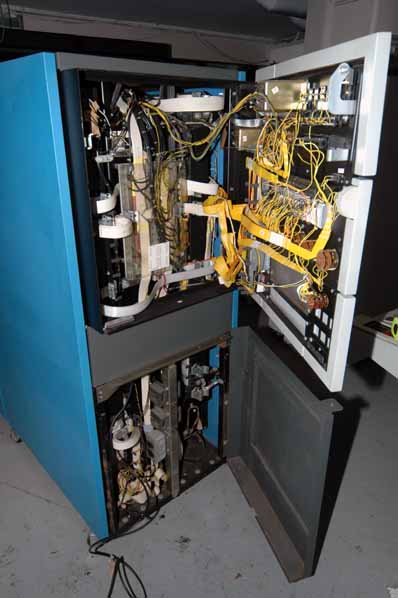
Front panel and lower access door open. The loose cable coming out of the
lower part of the machine is a coax cable for the 3277 console.
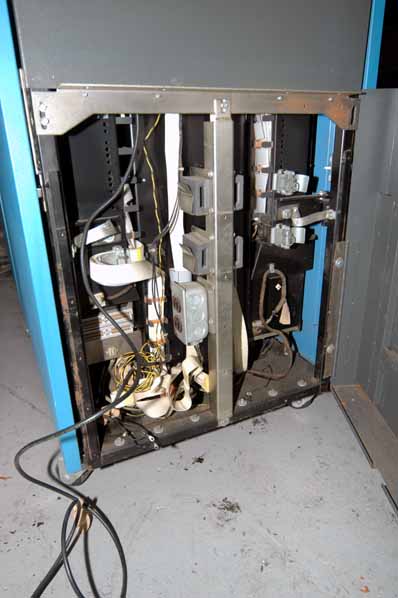
Closeup of the lower area below the front panel. 3270 coax cable, a bus
& tag connector for (presumably) the 5424 MFCM(1), or 3741 Data Station
(see later) and a convenience power outlet for the console. This is the
only area where there's some noticable surface rust on some of the frame
parts.
(1) MFCM officially stood for 'Multi-Function Card Machine'; the 5424 was
the small-card 96-column read/punch machine developed for the System/3.
Unofficially, 'Mother-F**king Card Mangler' was occasionally heard...
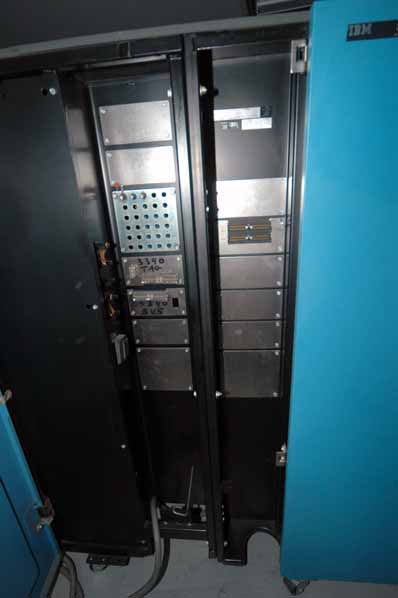
Moving back down the left side, and opening the second door, there's not
much here. A couple of bus & tag connectors, one marked up for the
3340 disks, the other for (presumably) the 3410 tapes. Also a panel for
coax 3270 connections for interactive terminals (Twinax for midrange machines
was a much later development), of which only three are actually fitted.
The power cable goes in here - this machine is set up for three-phase,
so hasn't been powered up yet; I'm investigating if single-phase was an
option for these machines, and if I can rewire it to work on single-phase.
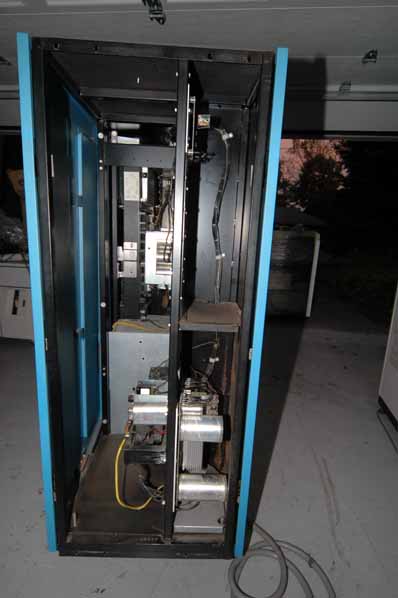
Looking in the end. This machine came without the end door, but there's
one on the spare machine. A lot of empty space in that end of the machine
- I/O connector panel, and some power components in the bottom and that's
about it.
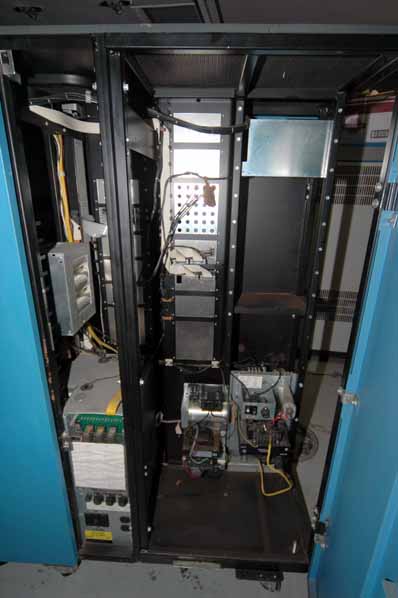
Looking in the rear door on the right side of the machine, you can see
the rear of the I/O connector panel - a lot of unused spaces there. In
the lower part are some of the power supply components, including the main
line-in box with breaker and fuses, on the bottom left.
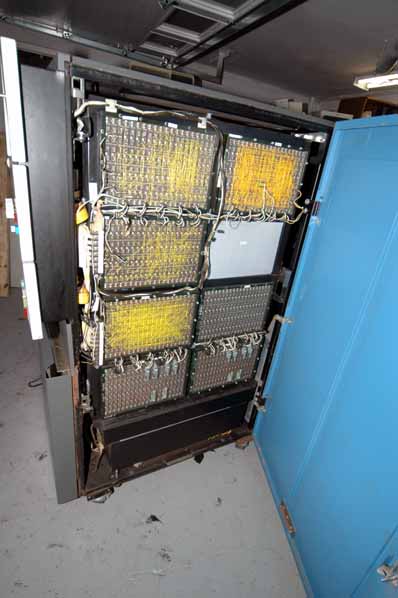
Opening the front door on the right side, we see the B-gate - a lot more
populated than the A-gate on the other side.
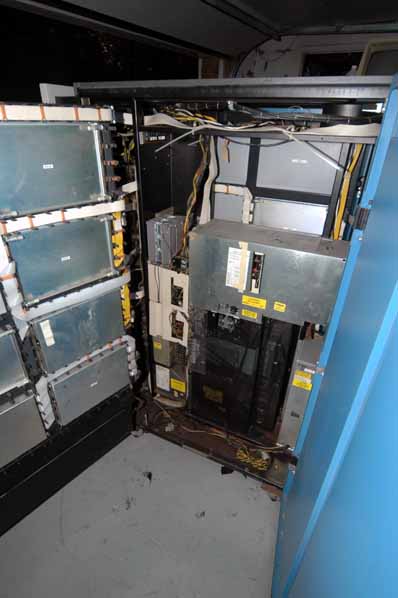
Opening the B-gate shows the 'business-end' of the mid-pac power supply
- bulk power in the centre, various regulators for various voltages on
the left.

Proud owner with System/3
This thing came with another very useful item... a 3741 Data Station. What
the hell is that, I hear you ask... well: IBM machines at this time were
traditionally very card-oriented. One important device was the keypunch
- an offline machine a bit like a typewriter with attached card punch.
Data entry operators would sit at these things punching data onto cards,
which would then be carried off to the mainframe to be read in and processed.
Technology moved on, and IBM developed the Data Station - which basically
did the same job as a keypunch, but encoded the data onto 8" floppy
disks.
This particular 3741 has an invaluable option - a bus and tag interface
which allows it to be used online as well as offline. You can hook it up
to the System/3 and IPL (boot, in IBM-speak) diagnostics from the floppy
disk - as far as the S/3 is concerned, it thinks it's IPLing from a deck
of cards.
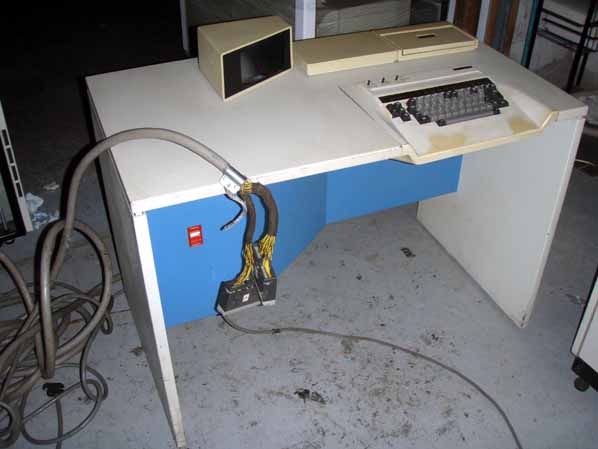
The 3741. Desk-sized device with keyboard, small screen display, 8"
floppy (mounted vertically in right rear)... and the crucial bus and tag
channel cable.
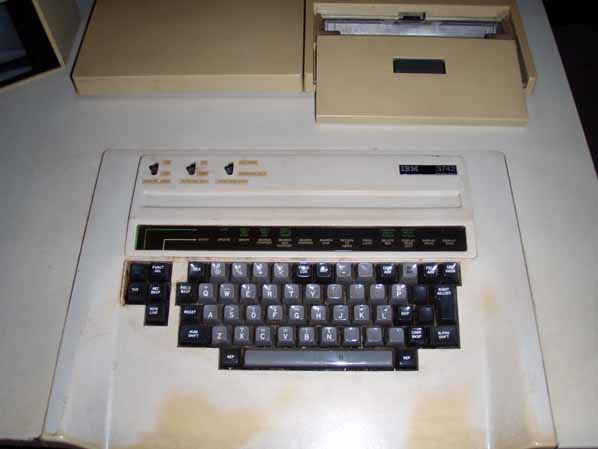
Close-up of the keyboard. 8" 33FD disk drive open in the rear.
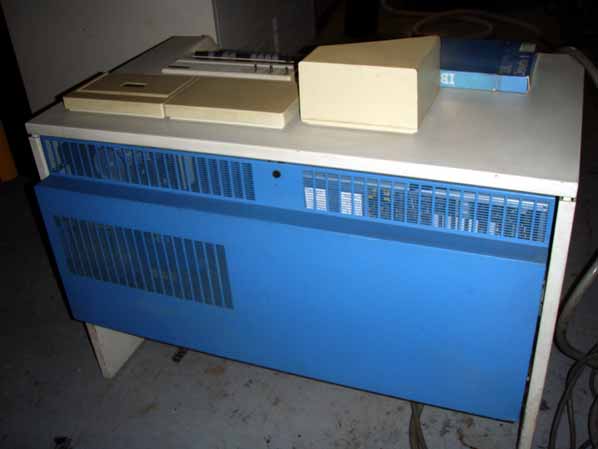
Rear view. Not much to see.
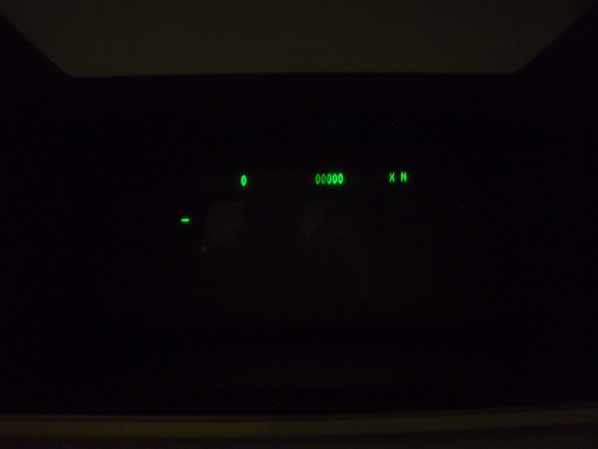
Yes, it works! This is the basic startup display - the screen is identical
to the System/32, a vertically-mounted CRT with a little housing with a
mirror inside allowing the operator to read the screen.
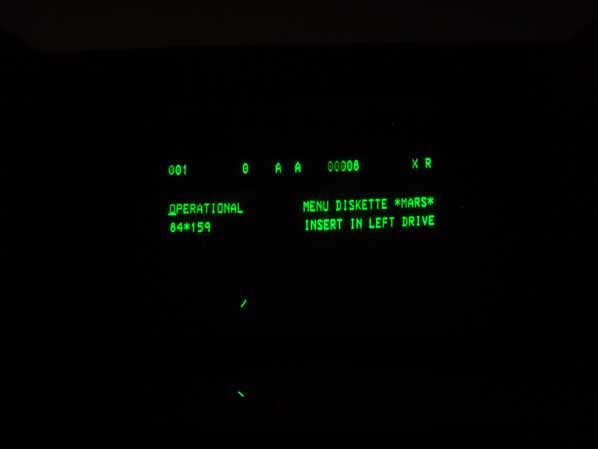
The 3741 has the ability to accept some very basic programming giving simple
menus or forms for data-entry. I happen to have a few such disks so tried
one - yep, that works too, it read the disk and runs the program. Looking
good!
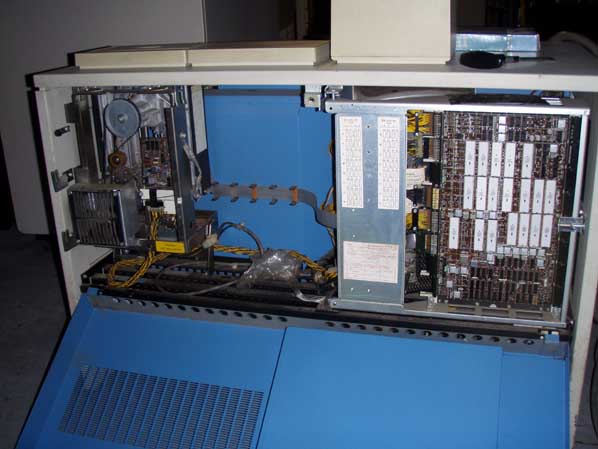
Rear view with door open. Logic on right, a single board, with power supply
behind. CRT tube behind the metal cover, 33FD floppy disk on the left.
A final close-up of the very clean System/3 panel:
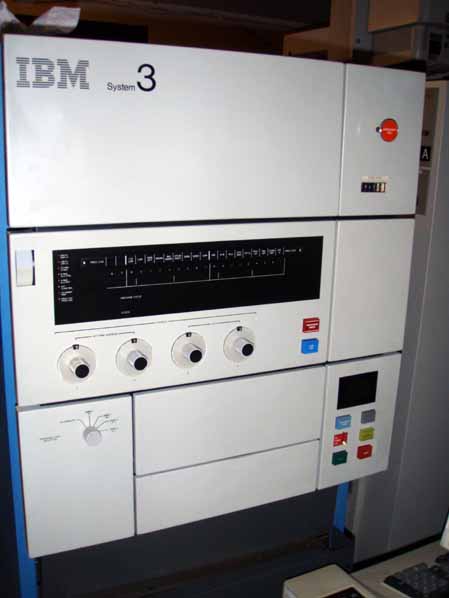
Updates will follow when we start getting the thing powered up!
There are very few System/3s in captivity:
Henk Stegeman is perhaps the most famous (or infamous) System/3 owner, he has two! http://ibmcollectables.com/gallery/view_album.php?set_albumName=Stegeman-1
The Bolo collection in Switzerland has one, a model 10: http://www.bolo.ch/english.php?list=1&obj=1
This guy had one in the early 1980s, but it was scrapped long ago: http://www.flickr.com/photos/83025347@N00/543967699/
William Donzelli has two System/3, but his website has been dead for over a year now: http://web.archive.org/web/20060618222226/http://starfish.osfn.org/~william/
This isn't a museum System/3, but is fascinating anyway: http://vads.ahds.ac.uk/diad/article.php?title=256&year=1970&article=d.256.30
Any other System/3 owners (or anyone who thinks they might remember where they saw one sitting in a barn someplace...) please get in touch!